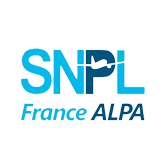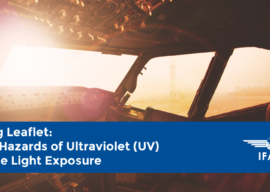
IFALPA Briefing Leaflet: Enhancing Pilot Monitoring
IFALPA recognizes the critical roles of Pilot Flying (PF) and Pilot Monitoring (PM) as foundational elements in flight deck operations. While the aviation industry has established clear definitions and responsibilities for these specific roles, IFALPA advocates for a renewed focus on the monitoring tasks associated with both the pilot flying and monitoring positions during all phases of flight. This leaflet aims to highlight the pilot monitoring tasks, supporting flight safety and operational efficiency, and introduce tools for enhancing its effectiveness in the cockpit. This briefing also introduces a theoretical background on human perception, cognition, and a model of situational awareness for pilot monitoring tasks. It then describes five tools designed to enhance monitoring effectiveness and their real-world applications. The reader is invited either to review the complete document or to review the tools individually, with references to the theoretical background where necessary.
IFALPA Briefing Leaflet: Ocular Hazards of UV and Blue Light Exposure
The range of wavelengths of visible light is from approximately 400 nanometres (nm) to 700nm. The wavelength of UV radiation is below that of visible light, ranging from 100nm to 400 nm. Since UV radiation has more energy than visible light, it may cause damage to the ocular lens of the eye causing cataracts. Blue light may play a role in the pathophysiology of macular degeneration depending on exposure intensity and time (...)
Briefing Leaflet: Ocular Hazards of UV and Blue Light Exposure
6 May 2024 - The range of wavelengths of visible light is from approximately 400 nanometres (nm) to 700nm. The wavelength of UV radiation is below that of visible light, ranging from 100nm to 400 nm. Since UV radiation has more energy than visible light, it may cause damage to the ocular lens of the eye causing cataracts. Blue light may play a role in the pathophysiology of macular degeneration depending on exposure intensity and time (...)
IFALPA Statement: Two Pilots, One Priority: Elevating Flight Safety
Discussion surrounding new technologies like Artificial Intelligence (AI) and autonomous vehicles in the aviation industry are advancing on many different levels. However, the central concern remains: will increased automation and technology truly enhance industry resilience, safety, and efficiency, or will it leave us more vulnerable? (...) For more information on this topic, please visit www.safetystartswith2.com
La Ligne 700 de mars 2024 est disponible
En ce mois de mars 2024, nous fêtons le 700ème numéro de La Ligne, une revue finalement aussi ancienne que le SNPL. C’est dire si elle a traversé plus d’un rebondissement historique durant ces sept décennies. Nous nous sommes plongés, pour l’occasion, dans les archives du syndicat afin de mieux vous faire connaître son évolution au fil des années tant sur le fond que sur la forme. La Cometec est à l’honneur dans ce numéro 700. Nous avons en effet interrogé deux de ses membres, issus de deux générations différentes de pilotes, afin d’en savoir plus sur ce qui les a poussés, à plusieurs décennies d’écart, à approfondir les aspects techniques du métier au profit de leurs collègues (...)
Joint Safety Bulletin IFALPA-IFATCA : Unlawful Communication Interference within the Mogadishu FIR
IFALPA and IFATCA have been made aware of aircraft experiencing a critical communication issue while en-route over Somalia, within the Mogadishu FIR. Crews were presented with instructions coming from "fake controllers" via the regular ATC frequency, with the apparent intention of diverting the flight from is planned route.
Position Paper IFALPA: Dangerous Goods on RPAS and UAS
Whilst the transport of DG on manned aircraft is heavily regulated, in most States there is currently no set of regulations that controls how DG are transported by RPAS and UAS. The carriage of DG by RPAS and UAS should only take place at a level of safety equivalent to the one guaranteed by ICAO provisions for manned aircraft (...)
IFALPA Briefing Leaflet: Detrimental Effects of Identifying Crew Members in Accident Reports
The goal of every accident investigation is to discover the contributing factors of the occurrence. Crew members involved in an accident or incident are often willing participants in the investigation, knowing that they are contributing to aviation safety by providing the information required to prevent a reoccurrence (...)
Position Paper IFALPA: PED Smoke or Fire Response Kits
Some airlines have been providing containment bags or boxes to crew members as part of their Dangerous Goods smoke or fire response kits, to deal with a potential thermal runaway of PEDs. IFALPA believes that these items need to meet certain requirements before being considered suitable for use (...)
Position Paper IFALPA: Deidentified Accident Reporting
In an occurrence report, identifying the individuals involved has no safety benefit and can only lead to the attribution of blame or liability. The traits or experience that contributed to the event are sufficient in identifying safety risks and addressing measures of prevention (...)

